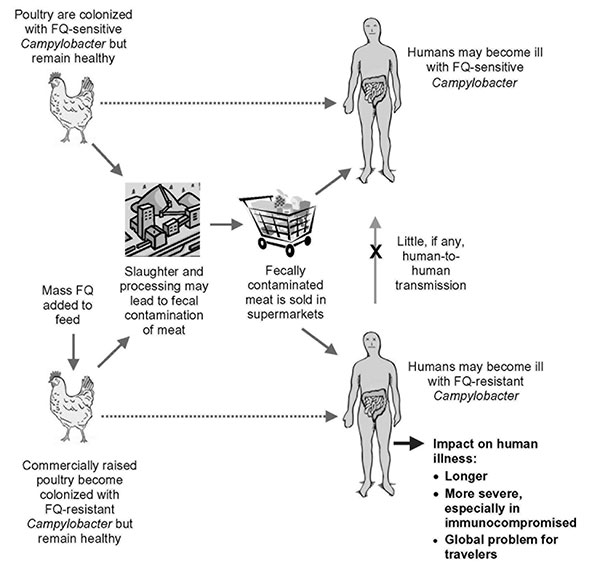Volume 10, Number 6—June 2004
Commentary
Antibiotics in Animal Feed and Spread of Resistant Campylobacter from Poultry to Humans
Figure

Figure. Acquisition of fluoroquinolone (FQ)-resistant Campylobacter from poultry. Campylobacter species are part of the normal enteric flora of poultry and are not resistant to fluoroquinolones, unless these have been added to the poultry feed in subtherapeutic doses. These antimicrobial-exposed poultry become colonized with resistant Campylobacter strains but remain healthy. During the slaughter and processing of the poultry, meat can become contaminated with Campylobacter in fecal material, and the organisms survive on processed poultry sent to supermarkets. Human consumption of Campylobacter-contaminated meat may lead to infection, with potentially increased morbidity if the strain is fluoroquinolone-resistant.
Page created: February 22, 2011
Page updated: February 22, 2011
Page reviewed: February 22, 2011
The conclusions, findings, and opinions expressed by authors contributing to this journal do not necessarily reflect the official position of the U.S. Department of Health and Human Services, the Public Health Service, the Centers for Disease Control and Prevention, or the authors' affiliated institutions. Use of trade names is for identification only and does not imply endorsement by any of the groups named above.